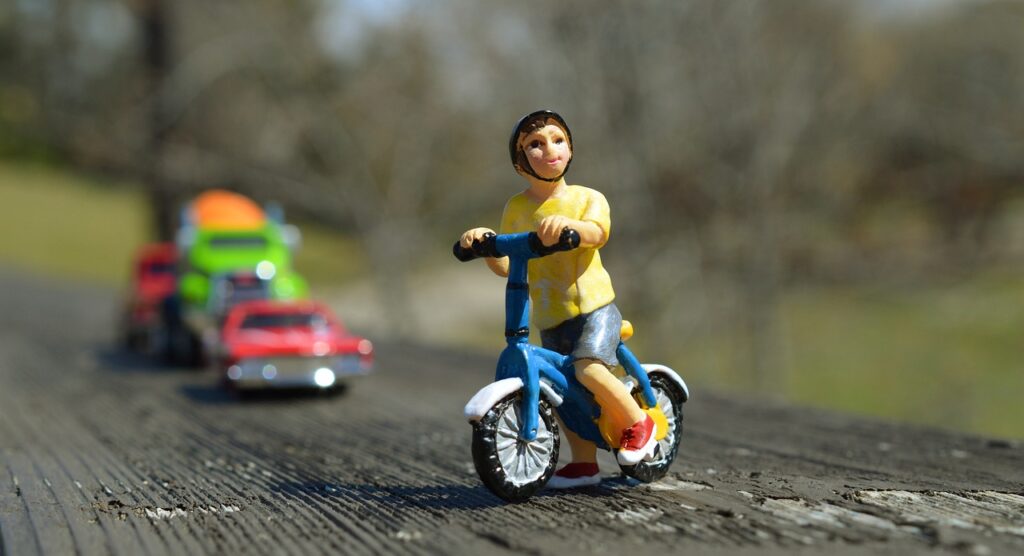Winter cycling can be made more enjoyable and comfortable for e-bikers with these DIY solutions. Discover helpful tips to enhance your winter cycling experience.
As the winter season sets in, many e-bikers face challenges when it comes to cycling in cold weather. However, with the right DIY solutions, you can make your winter cycling experience more enjoyable and comfortable. Whether it’s keeping warm, improving visibility, or protecting your e-bike from the elements, these hacks will help you tackle the winter weather head-on.
From installing heated handlebar grips to using reflective tape for increased visibility, these DIY solutions are practical and easy to implement. So, let’s delve into the world of winter cycling hacks and make the most of your e-biking adventures this winter season.
Preparing Your E-bike For Winter Cycling
Winter cycling can be a thrilling and adventurous experience, especially for e-bikers who want to keep their wheels spinning all year round. However, it’s essential to take a few necessary precautions to ensure your e-bike is ready to tackle the challenges posed by cold winter weather. From insulating your battery to protecting your motor and enhancing traction, these DIY solutions will help you enjoy a smooth and safe ride. Let’s dive into the details and explore how you can prepare your e-bike for winter cycling.
Insulating Your Battery
When temperatures drop, it is crucial to protect your e-bike’s battery to maintain its optimal performance. Cold temperatures can significantly reduce the battery’s efficiency and overall range. To prevent this, here’s a simple DIY solution: insulate your battery.
One effective way to insulate your battery is by using a foam sleeve or a neoprene cover. These materials provide excellent insulation and help to retain the battery’s warmth. Wrap the foam sleeve or neoprene cover around the battery tightly, making sure it is secure and well-insulated. Additionally, avoid leaving your e-bike outside in freezing temperatures for an extended period; instead, store it in a dry and temperature-controlled environment.
Protecting Your Motor
During winter cycling, it’s vital to protect your e-bike’s motor from the harsh elements. Snow, slush, and road salt can damage the motor, leading to reduced performance and potential malfunctions. Taking a few simple steps can help ensure your motor remains in excellent condition throughout the winter season.
First, consider using a motor cover or a plastic shield to protect your e-bike’s motor. These covers act as a protective barrier against moisture, dirt, and debris, safeguarding the sensitive components from damage. Ensure that the cover fits securely and does not obstruct any vents or cooling systems of the motor.
Additionally, cleaning your motor regularly is essential. Snow, salt, and grime can build up, increasing the risk of corrosion. Use a soft cloth or a brush to gently remove any debris accumulated on the motor and ensure it remains clean and free from potential damage.
Enhancing Traction
Winter roads can be slippery and unpredictable, posing challenges for e-bikers. Enhancing traction is key to maintaining stability and control during winter cycling.
Consider upgrading your e-bike’s tires with winter-specific or all-weather tires. These tires provide better grip and traction on wet and icy surfaces, minimizing the risk of accidents and ensuring a smoother ride. Additionally, adjusting the tire pressure can further enhance traction. Lowering the tire pressure slightly allows for a wider contact surface, providing better stability on slippery roads.
Another essential tip to enhance traction is attaching tire studs or chains. These will significantly increase grip and prevent slipping on icy roads, ensuring a safer and more enjoyable winter cycling experience. When attaching tire studs or chains, make sure to follow the manufacturer’s instructions to install them correctly and securely.

Credit: www.youtube.com
Staying Warm And Dry
When it comes to winter cycling, staying warm and dry is essential for a comfortable and safe ride. The cold and wet conditions can pose a challenge, but with these DIY solutions, e-bikers can stay cozy and protected during their winter rides.
1. Layering Up
Layering is the key to staying warm during winter cycling. By wearing multiple layers, you can trap heat and regulate your body temperature effectively. Here’s a simple layering guide:
- Start with a moisture-wicking base layer to keep sweat away from your skin. This will prevent you from feeling chilled.
- Add an insulating mid-layer, such as a thermal long-sleeve shirt or a fleece jacket, to provide warmth without added bulk.
- Finish with an outer layer that is windproof and waterproof. Look for a cycling-specific jacket that offers ventilation options to prevent overheating.
2. Keeping Hands And Feet Warm
Our extremities are often the first to feel the cold, so it’s crucial to keep your hands and feet warm while cycling in winter. Here are some tips:
- Invest in a good pair of winter cycling gloves that are both insulated and waterproof.
- Consider wearing glove liners or using hand warmers for added warmth during extremely cold rides.
- Opt for thermal cycling socks that are moisture-wicking and provide sufficient insulation for your feet.
- Use shoe covers or overshoes to protect your cycling shoes from rain and cold wind.
3. Waterproofing Your Gear
Keeping your gear dry is essential to ensure a comfortable ride and prolong the lifespan of your equipment. Here’s how you can waterproof your essentials:
- Invest in a quality waterproof backpack or panniers to protect your belongings from rain and snow.
- Use waterproof covers for your e-bike’s saddle and handlebars to prevent water ingress.
- Avoid frostbite and protect your phone by using a waterproof phone case or placing it in a waterproof pouch.
By implementing these DIY solutions, e-bikers can conquer winter cycling challenges and enjoy their rides without compromising warmth and dryness. Stay cozy, stay safe!
Maximizing Safety And Visibility
When it comes to winter cycling, staying safe and visible on the road is crucial. With shorter daylight hours and often challenging weather conditions, it’s essential for e-bikers to take extra precautions. Thankfully, there are plenty of DIY solutions that can help you maximize both safety and visibility. In this article, we’ll explore three key areas: installing reflective gear, choosing the right lighting, and dealing with low visibility.
Installing Reflective Gear
One of the most effective ways to make yourself more visible on the road is by installing reflective gear. By using reflective materials, you’ll increase your visibility to other drivers, especially in low-light conditions or during snowy weather.
There are various types of reflective gear that you can easily attach or incorporate into your e-bike. Some popular options include:
- Reflective tape: Place strips of reflective tape on your fenders, bike frame, helmet, and other visible areas.
- Reflective vests or jackets: Invest in a high-visibility vest or jacket with built-in reflectors.
- Reflective ankle bands: These bands can be wrapped around your ankles, providing additional visibility.
By integrating these reflective elements into your winter cycling gear, you’ll significantly improve your visibility to other road users and reduce the risk of accidents.
Choosing The Right Lighting
When it comes to cycling in the dark, having the right lighting is essential for both your safety and the safety of others. Choosing the right lighting can ensure that you are visible to other road users and help you navigate the winter conditions with ease.
Consider investing in the following types of lights:
- Headlights: Install a powerful headlight on your e-bike’s handlebars to illuminate the road ahead.
- Taillights: Attach a bright taillight at the back of your bike to make yourself visible from behind.
- Wheel lights: Opt for wheel lights that emit a constant or flashing light, grabbing the attention of drivers and pedestrians.
Additionally, make sure to check your lights regularly and replace batteries as needed. Being proactive about your lighting setup will ensure that you can ride confidently in low-light situations, knowing that you’re maximizing your visibility on the road.
Dealing With Low Visibility
Low visibility can be a significant challenge for winter cyclists. However, by taking a few extra precautions, you can navigate these conditions safely and confidently. Here are some tips for dealing with low visibility:
- Use a fog-resistant mask: Invest in a fog-resistant mask that covers your mouth and nose, preventing condensation and improving your field of vision.
- Wear clear or yellow-tinted glasses: Clear or yellow-tinted glasses can enhance contrast and visibility in low-light conditions.
- Choose brightly colored clothing: Opt for bright-colored clothing or accessories, increasing your visibility to others.
By following these DIY solutions, you’ll be better equipped to handle low visibility and enjoy your winter cycling adventures with enhanced safety.
Remember, maximizing your safety and visibility on the road is vital during the winter season. By installing reflective gear, choosing the right lighting, and implementing strategies for low visibility, you can confidently tackle the challenges of winter cycling while reducing the risk of accidents. Stay safe, stay visible, and enjoy your e-bike rides even in the coldest months!
Frequently Asked Questions Of Winter Cycling Hacks: Diy Solutions For E-bikers
How Do I Keep My Ebike Warm In The Winter?
To keep your eBike warm in winter, you can use a battery cover or insulating wraps to shield it from cold temperatures. Storing it indoors or in a heated garage is also helpful. Make sure to remove any ice or snow before riding.
How Do You Winterize An Electric Bike?
To winterize an electric bike, follow these steps: 1. Store it in a cool, dry place to protect the battery. 2. Remove the battery and charge it to roughly 50% capacity. 3. Clean the bike thoroughly to prevent corrosion. 4.
Lubricate moving parts and apply rust-proofing spray. 5. Check tire pressure and inflate as needed.
How Do You Ride An Ebike In The Snow?
To ride an eBike in the snow: Lower the tire pressure for better traction. Be smooth on the throttle and brakes for stability. Use wider tires for improved grip. Dress warmly and use waterproof gear. Stay safe with good visibility and avoid sudden turns or rapid acceleration.
How To Make Electric Bicycle At Home Easy?
To make an electric bicycle at home, follow these steps:
1. Start with a regular bicycle.
2. Purchase an electric motor conversion kit.
3. Remove the front wheel and attach the motor.
4. Install the battery and connect it to the motor.
5. Test the electric bicycle before riding.
Conclusion
These winter cycling hacks provide e-bikers with cost-effective and practical DIY solutions to tackle the challenges of riding in the colder months. By implementing techniques like using hand warmers, purchasing thermal shoe covers, and applying lubricant to prevent rust, cyclists can enhance their winter riding experience.
With these simple and effective hacks, e-bikers can continue enjoying their rides while staying comfortable and safe in chilly weather conditions. Stay warm and keep pedaling!



